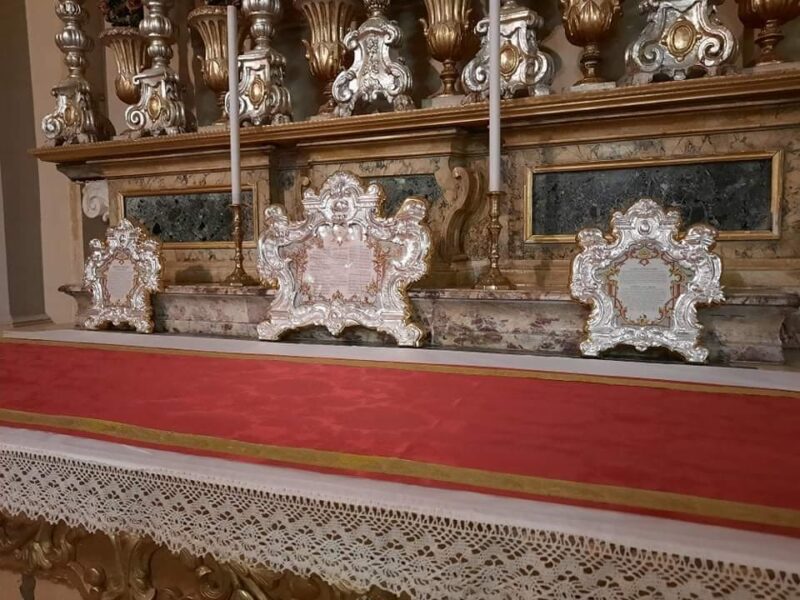As we are well into the feasts’ season, we see furnishings, decorations, and liturgical objects of immense value and inestimable worth in our churches. Some of these are purely decorative—like, for example, the red damask hanging on the walls. But other objects serve a practical purpose, such as the candlesticks on the altar, the chasubles, and the chalices. Some of these remind us of priests to whom they once belonged and who left them for the use of the parish. We also remember people who used to care for these same furnishings or who were their benefactors. While there were certainly wealthy benefactors, there were also generous donations from large, low-income families who were willing to make even further sacrifices so that the Lord’s house is adorned with the finest materials and artifacts for the celebration of the sacred mysteries.
Then there are objects we have grown used to but rarely consider their meaning—like the canopy, whose purpose is to honour and cover, in regal fashion, the most sacred spaces: the altar and the tabernacle. Yet, there are other objects that we have either lost or forgotten their purpose—particularly because they have continued to be put on display in our churches, even though they lost their purpose following the liturgical reforms of the Second Vatican Council.
Perhaps the most prominent among these are three somewhat oddly shaped frames—one larger than the other two—which are set up on the side altars. These are usually made of silver, or wood coated in silver, or another shiny metal, with glass covering a sheet of yellowed paper adorned with delicate decorations and inscriptions. I’m referring to the Altar Cards, which are called “Karti Glorja” (Gloria Cards) in Maltese. But why do we call them this? What was their purpose?
Before the liturgical reform, priests would celebrate Mass privately at the various altars of the church, sometimes simultaneously. Apart from the missal—which is the book containing the prayers of the Mass—these three framed cards were also placed on the altars, each containing different parts of the Mass. On the left-hand side was placed the card with a passage from the Prologue of the Gospel according to John (Jn 1:1–14), which was recited at the end of the Mass. In the centre stood the larger altar card, which contained, among other things, the Gloria (hence the name), the prayer said silently by the priest before the Gospel, the Creed, the words of consecration and other parts of the Eucharistic Prayer. The third card, on the right, included the prayer said by the priest as he poured a few drops of water into the chalice filled with wine during the offertory, and the prayer said during the washing of the hands—taken from Psalm 26, beginning with the words: “I wash my hands in innocence, and go about thy altar, O Lord,” (Psalm 26:6).
The priest was expected to know these prayers by heart, and so the Karti Glorja served as a reminder. Even the placement of the cards on the altar reflects the location from which the priest would say that particular prayer. For instance, the words of consecration are found on the centre card, while the prayers from the offertory is on the left, where the priest would stand to fill the chalice and where the server would wash his hands.
I hope that now I’ve satisfied your curiosity about those blessed strange yet beautiful frames. When you walk into a church during feast days, you’ll be able to better appreciate not only the genuine devotion of our ancestors, who wanted to offer only the best to God, but also the understanding that everything in the liturgy has a purpose—not simply to embellish, but to reflect the beauty of the mystery being celebrated.




